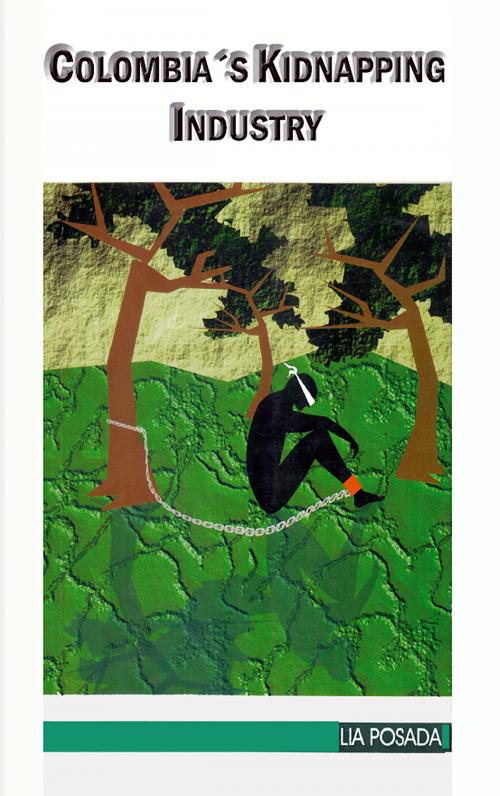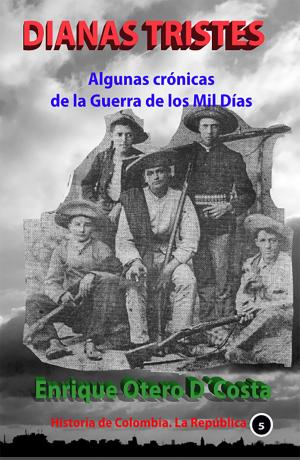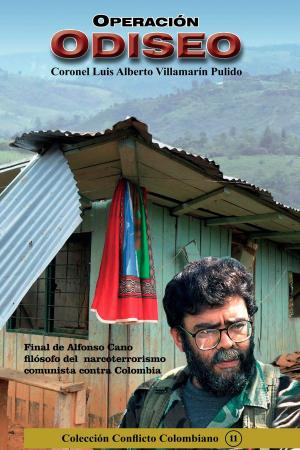| Author: | Lia Posada | ISBN: | 9781370963294 |
| Publisher: | Luis Alberto Villamarin Pulido | Publication: | March 14, 2018 |
| Imprint: | Smashwords Edition | Language: | English |
| Author: | Lia Posada |
| ISBN: | 9781370963294 |
| Publisher: | Luis Alberto Villamarin Pulido |
| Publication: | March 14, 2018 |
| Imprint: | Smashwords Edition |
| Language: | English |
Colombia has been plagued by communist subversive movements for more than four decades. This problem was compounded by the growth of powerful drug cartels two decades ago.
The Colombian drug cartels came to dominate the cocaine markets worldwide and have lately branched out to the production of opium based products.
The cartels reacted vigorously, unconstrained by legal niceties. They are still in conflict in areas of the country where the drug barons invest in prime cattle raising land. But they have entered into an uneasy alliance in coca growing areas.
Initially in these remote areas, the guerrillas were content to "tax" growth and processing but they eventually became involved in the business directly.
This involvement greatly increased the guerrilla groups' income. Their kidnapping activity did not diminish. As a matter of fact, kidnap victims can be held with impunity in these areas of coca growing activity.
The Colombian conflict is not well understood in the United States or Europe. Scholars, politicians and the general public in the developed world are subjected to the propaganda of the left which portrays the Colombian subversive movements, including their armed components, as well meaning idealists fighting for the poor.
Although idealism and in some cases legitimate grievances gave rise to the subversive movements decades ago, today their main motivation has become simple greed. A negotiated peace settlement is thus very difficult.
No amount of political concessions, short of handing over the government are likely to satisfy a leadership used to a huge inflow of money from drugs, kidnapping and extortion.
The author has based the story on extensive inter
views and research touching most of the actors involved in
typical kidnapping cases. We at the Center believe that she has managed to portray the human drama as well as the weaknesses of the Colombian state that allow the "kidnapping industry" to prosper.
The success of kidnapping by the guerrillas in Colombia has inevitably produced an awareness by other criminal groups of the potential profits involved. Not only have common criminal gangs in Colombia followed suit, but kidnapping is also a growing problem in Colombia's neighbors, Brazil, Ecuador and Venezuela, as well as in México.
The world paid much attention to kidnapping in the Middle East, but ¡s largely unaware of the extent of the problem in Latin America. Statistics, however, are cold.
The story of one family is a better way to have us "feel" the pain and disruption kidnapping produces in a community. When the subversive groups and their leftist supporters abroad talk about "retention of people for the financing of their noble cause", we can now know what involved is really.
The effect of kidnapping ¡s difficult to measure in economic terms, but undoubtedly the investment climate, both domestic and foreign is severely affected. Important executives and the very wealthy hire large squads of bodyguards for protection.
A high cost for the economy. Small entrepreneurs, like the Mazueras, the family in the main story, cannot afford this. A kidnapping severely weakens their capital base and hardly stimulates them to continue the development
of their businesses. This effect has acted as a brake to Colombian development.
Why should an internal conflict such as Colombia's worry Americans or Europeans in the post-cold war era? Is not violent communism dead? The answer to the first question ¡s: YES, there is reason to worry. The answer to the second ¡s: NO, violent communism, however debased and obsolete, is not dead.
The methods of Colombia's subversive movements are spreading. Subversive organizations are emerging in México, for example. Kidnapping is on the rise in that country, now part of the North American Free Trade Area, and a country that shares a long border with the US. The involvement of armed guerrillas bands with drugs make the drug trade much more difficult to suppress.
Colombia has been plagued by communist subversive movements for more than four decades. This problem was compounded by the growth of powerful drug cartels two decades ago.
The Colombian drug cartels came to dominate the cocaine markets worldwide and have lately branched out to the production of opium based products.
The cartels reacted vigorously, unconstrained by legal niceties. They are still in conflict in areas of the country where the drug barons invest in prime cattle raising land. But they have entered into an uneasy alliance in coca growing areas.
Initially in these remote areas, the guerrillas were content to "tax" growth and processing but they eventually became involved in the business directly.
This involvement greatly increased the guerrilla groups' income. Their kidnapping activity did not diminish. As a matter of fact, kidnap victims can be held with impunity in these areas of coca growing activity.
The Colombian conflict is not well understood in the United States or Europe. Scholars, politicians and the general public in the developed world are subjected to the propaganda of the left which portrays the Colombian subversive movements, including their armed components, as well meaning idealists fighting for the poor.
Although idealism and in some cases legitimate grievances gave rise to the subversive movements decades ago, today their main motivation has become simple greed. A negotiated peace settlement is thus very difficult.
No amount of political concessions, short of handing over the government are likely to satisfy a leadership used to a huge inflow of money from drugs, kidnapping and extortion.
The author has based the story on extensive inter
views and research touching most of the actors involved in
typical kidnapping cases. We at the Center believe that she has managed to portray the human drama as well as the weaknesses of the Colombian state that allow the "kidnapping industry" to prosper.
The success of kidnapping by the guerrillas in Colombia has inevitably produced an awareness by other criminal groups of the potential profits involved. Not only have common criminal gangs in Colombia followed suit, but kidnapping is also a growing problem in Colombia's neighbors, Brazil, Ecuador and Venezuela, as well as in México.
The world paid much attention to kidnapping in the Middle East, but ¡s largely unaware of the extent of the problem in Latin America. Statistics, however, are cold.
The story of one family is a better way to have us "feel" the pain and disruption kidnapping produces in a community. When the subversive groups and their leftist supporters abroad talk about "retention of people for the financing of their noble cause", we can now know what involved is really.
The effect of kidnapping ¡s difficult to measure in economic terms, but undoubtedly the investment climate, both domestic and foreign is severely affected. Important executives and the very wealthy hire large squads of bodyguards for protection.
A high cost for the economy. Small entrepreneurs, like the Mazueras, the family in the main story, cannot afford this. A kidnapping severely weakens their capital base and hardly stimulates them to continue the development
of their businesses. This effect has acted as a brake to Colombian development.
Why should an internal conflict such as Colombia's worry Americans or Europeans in the post-cold war era? Is not violent communism dead? The answer to the first question ¡s: YES, there is reason to worry. The answer to the second ¡s: NO, violent communism, however debased and obsolete, is not dead.
The methods of Colombia's subversive movements are spreading. Subversive organizations are emerging in México, for example. Kidnapping is on the rise in that country, now part of the North American Free Trade Area, and a country that shares a long border with the US. The involvement of armed guerrillas bands with drugs make the drug trade much more difficult to suppress.















